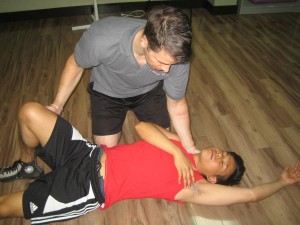What causes heart disease?

Heart disease, specifically ischemic heart disease, is the leading cause of mortality in the world (according to the WHO). In America alone, it kills over 600,000 people each year – that’s 1 in every 4 Americans. Coronary artery disease (CAD) – a kind of heart condition – accounts for more than half of the total deaths due to heart disease, a total of over 385,000 deaths annually.
CAD is a very specific disease because its risk factors are pretty streamlined: hypertension, high blood pressure, unhealthy lifestyle (diet and physical activity).
Unhealthy diet
An unhealthy lifestyle is the biggest risk factor for developing CAD, primarily with poor diet and exercise. When it comes to diet, you have to remember that not all cholesterol is bad. LDL – short for low-density lipoprotein – is bad cholesterol, found in fast food and junk food. It is a kind of cholesterol that doesn’t get processed by body, therefore it is stored in the body and become fatty deposits that can block our blood vessels, especially those in the brain and leading to the heart.
LDLs are “heavier” than good cholesterol – HDL or high-density lipoprotein – and can damage blood vessels as they circulate through the body. Plaque can easily build up in damaged vessels, creating a blockage called a thrombus. The thrombus can completely or partially occlude the vessel, or can break off and circulate in the blood stream – now called an embolus. Emboli are very dangerous because they can end up anywhere, usually the brain, resulting in a stroke.
How does CPR help?

During cardiac arrest, the heart stops beating. Without a properly beating heart, our organs are deprived of oxygen and start to die. In order to get the heart to beat again, chest compressions are given to the victim. Two hands are placed on top of each other in the center of the chest and pressed down at a rate of at least 100 a minute. The chest has to be compressed by at least two inches in adults (1 inch to 1.5 inches in infants and toddlers) for the heart to be fully compressed. Also, remember to allow the chest to recoil before giving another compression.
At Seattle CPR, there are five CPR training courses and three re-certification classes you can enroll in. They last anywhere between four hours to sixteen hours, from one to two day sessions. All of the courses are certification courses, meaning you will be awarded with a training credential once you finish training.
- Basic CPR for the public – 4 hours
- Basic CPR for HCPs (healthcare providers) – 4.5 hours
- Basic Life Support for HCPs – 4.5 hours
- Basic Life Support for HCPs re-certification – 4 hours
- Advanced Cardiac Life Support (ACLS) – 16 hours
- ACLS re-certification – 5 – 6 hours
- Pediatric Advanced Life Support (PALS) – 14 hours
- PALS re-certificaton – 6 – 8 hours
